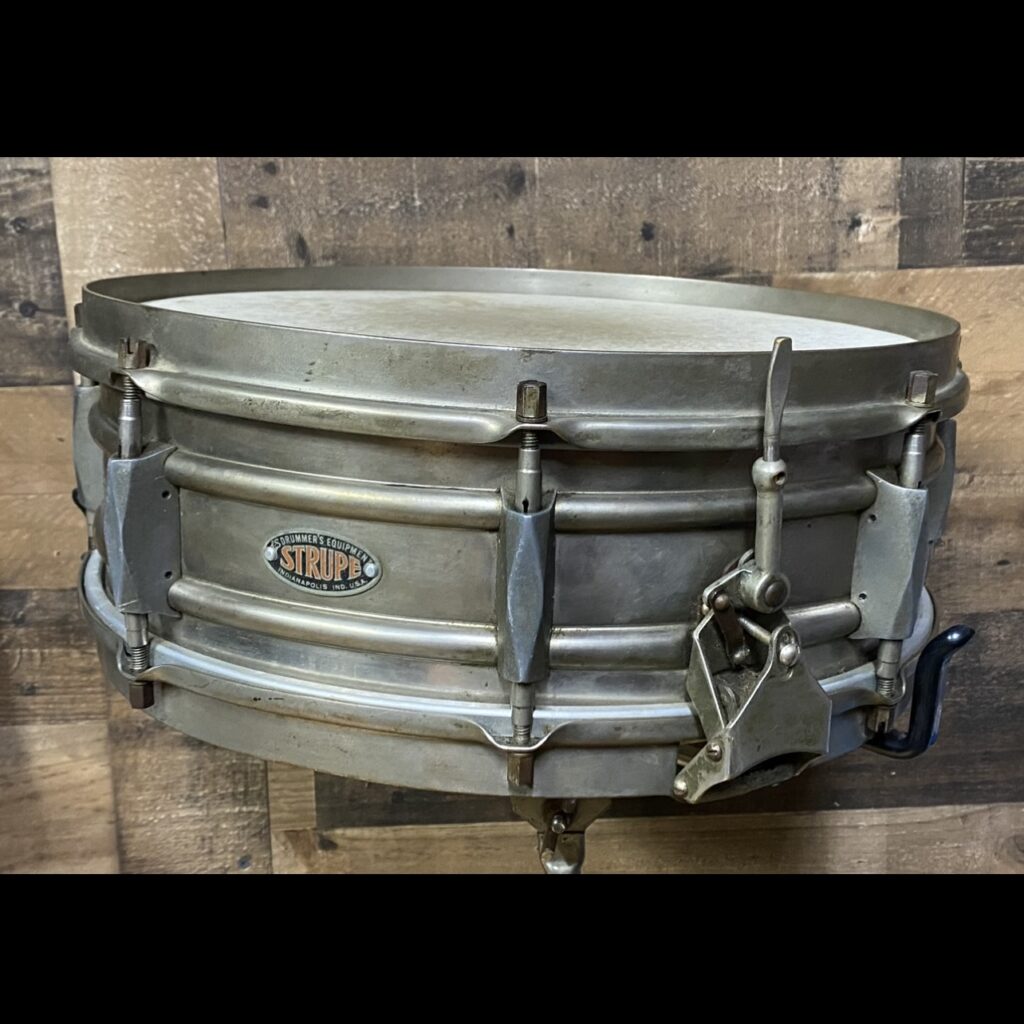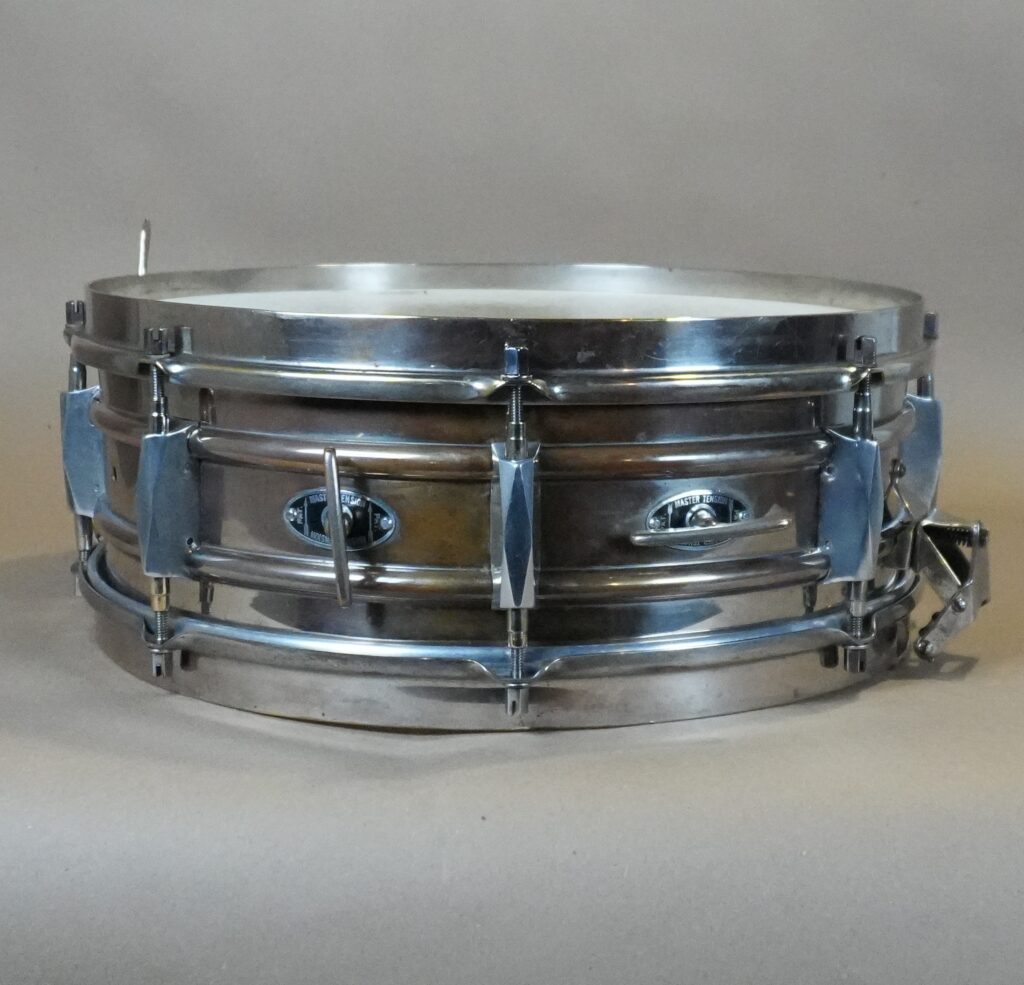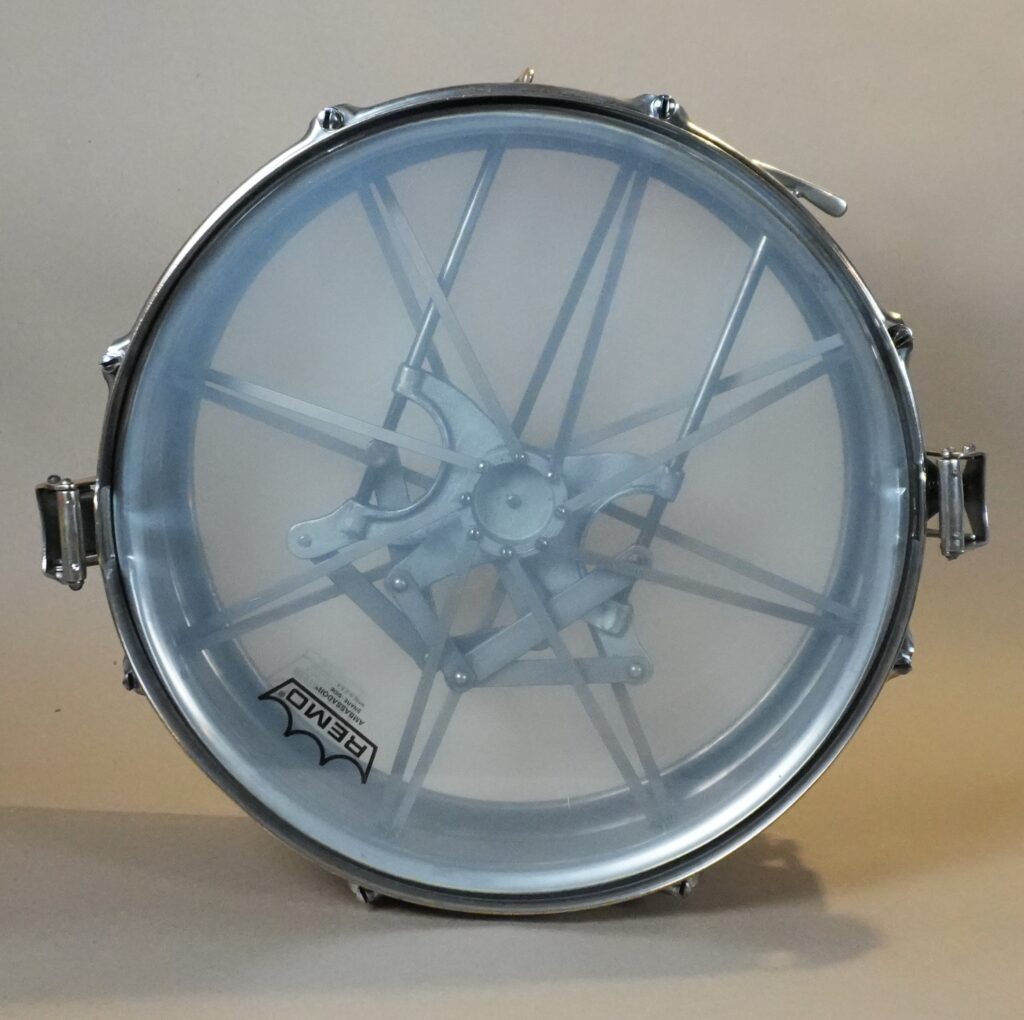

Restoration Details
The L&S Master Tension snare drum was developed by Leedy and Strupe in Indianapolis, Indiana in the 1930’s. While U.G. Leedy had passed and his son, E.H. Leedy, was monetarily at the helm, this company and indeed this drum was really the brainchild of Cecil Strupe, former Leedy engineer and superintendent. The lugs are machined from solid aluminum, and hide a small tympani-style mechanism inside each one. Two T-handles extend through the shell and thread into a spoked hub in the center of the drum, controlling the overall tension of the top and bottom heads independently. The idea was to be able to raise and lower the pitch of the snare with a simple adjustment on the fly, to compensate for calf head slackening and to change the color of the snare as the piece of music dictated. Well engineered but complex, this snare had a short marketed life of just two years and minimal number were produced.
This snare came to the shop missing one lug mechanism and all associated parts, knobs for the throw off which was non-functioning, a few tension rods, and miscellaneous assembly screws. The shell and internal mechanism were coated in some form of oil or grease, like it was sitting in a machine shop for the last four decades. Parts for this were going to be nearly impossible to find given the very limited numbers these were produced in, so we opted to recreate the missing parts from scratch. The lug housing was sand cast from an aluminum alloy to match the originals, and machined to fit. Internal parts for the lug mechanism were either cut from mild steel or machined from brass and plated to match the original components. The knobs missing from the throw off were machined from brass and plated, and the throw off itself was completely disassembled, straightened, reformed and reassembled. Tension rods were machined from mild steel and plated.
It is interesting to note that we have restored three of these snare drums. All three have been slightly different: two had different throw off designs, and they all had differently machined parts. This leads us to believe these were built in more limited quantities than previously thought – they were possibly built to order, or in batches smaller than 10 at a time. This snare, for example, features internal parts unlike the other drums in size and shape, a somewhat rudimentary approach to the moving lug nuts as compared to the other drums, and shavings inside the lug castings left over from the machining process! Larger operations wouldn’t have these inconsistencies, and certainly anything built in large quantities would feature identical parts.
After a good cleaning and polishing, we reassembled this drum and found…. it didn’t work well. Years of over tensioning and neglect left most of the mechanisms misaligned and bent, cracked or worn beyond functioning. Furthermore, as discussed above, this drum may have been a very early build or prototype for these drums, and as such there were some bugs still left to work out. So the entire project came back apart and we began the process of realigning the internal workings piece by piece until it functioned as originally intended. We did not “fix” any of the issues we deemed originally present to preserve originality. Instead, we opted to repair anything we attributed to misuse or neglect after it left the factory. Now back together, this snare stands as a crowning achievement of the short lived Leedy and Strupe Drum Company, albeit completely over engineered and ridiculously complicated compared to your average snare. It isn’t hard to see why these sold in such low numbers!


